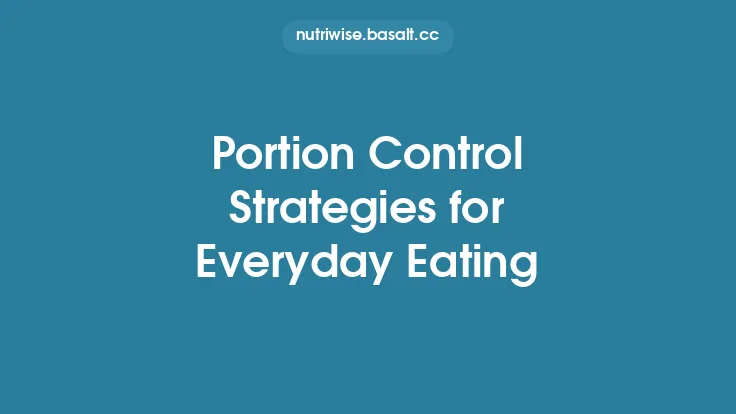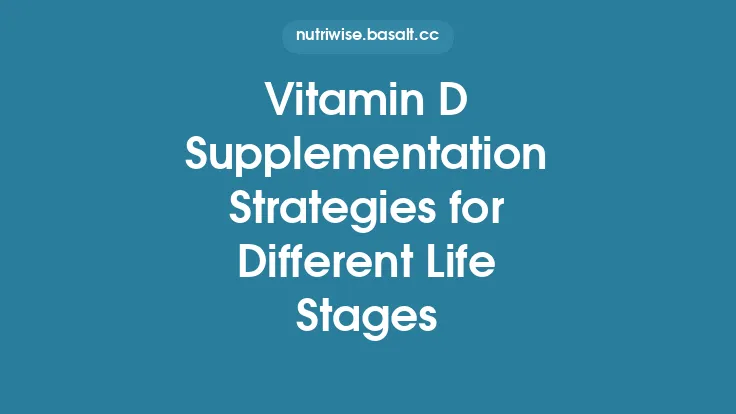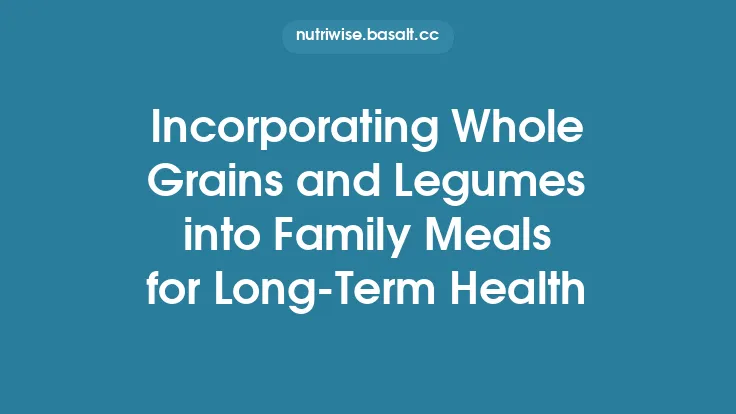Slow‑cooker meals have become a staple in many households because they combine convenience with the ability to coax deep, layered flavors from humble ingredients. When the goal is to combat chronic inflammation—a driver of conditions ranging from arthritis to cardiovascular disease—the slow‑cooker can be an especially powerful ally. Its low, steady heat preserves heat‑sensitive phytochemicals, allows tough, fibrous vegetables to break down into nutrient‑rich purees, and gives time for anti‑inflammatory spices and herbs to infuse every bite. Below, we explore the science behind the method, the optimal equipment and settings, ingredient selection, recipe‑building strategies, and practical tips for maximizing both flavor and health benefits.
Understanding the Anti‑Inflammatory Chemistry of Slow Cooking
Low‑Temperature, Long‑Duration Heat
Inflammation‑modulating compounds such as polyphenols, flavonoids, and certain vitamins (e.g., vitamin C, some B‑vitamins) are notoriously sensitive to high temperatures. Rapid, high‑heat methods can degrade these molecules, reducing their bioavailability. A slow‑cooker typically operates between 80 °C (176 °F) and 95 °C (203 °F), a range that is hot enough to denature proteins and gelatinize collagen but gentle enough to preserve most phytochemicals.
Enhanced Bioavailability Through Softening
Many anti‑inflammatory nutrients are locked within plant cell walls. Prolonged simmering at low heat breaks down cellulose and hemicellulose, releasing compounds such as curcumin (from turmeric), quercetin (from onions), and anthocyanins (from berries). This mechanical breakdown also improves the absorption of minerals like magnesium and potassium, which play roles in regulating inflammatory pathways.
Synergistic Extraction of Spices
Spices contain essential oils that are often volatile. The slow, moist environment of a crockpot allows these oils to dissolve into the cooking liquid gradually, creating a more uniform distribution. For example, the eugenol in cloves and the cinnamaldehyde in cinnamon become more bioavailable when simmered for several hours, amplifying their anti‑inflammatory impact.
Choosing the Right Slow‑Cooker for Health‑Focused Cooking
Capacity and Shape
- Capacity: A 4‑ to 6‑quart model is ideal for families, while a 2‑quart unit works well for single‑serve or side‑dish preparations.
- Shape: Oval pots provide more surface area for heat distribution, which can be advantageous for larger cuts of meat or whole vegetables.
Heating Mechanism
- Conventional (resistive) heating: Most affordable models use a heating element that surrounds the pot. Look for units with adjustable low, medium, and high settings and a “keep warm” function that maintains temperatures below 60 °C (140 °F) to prevent over‑cooking.
- Induction or ceramic‑plate models: These provide more precise temperature control, often with digital readouts. They can maintain a tighter temperature band (e.g., 85 °C ± 2 °C), which is beneficial for preserving delicate nutrients.
Material of the Inner Pot
- Ceramic or stoneware: Non‑reactive, excellent for acidic foods (tomatoes, citrus) and do not leach metals.
- Stainless steel: Durable and also non‑reactive, though it may retain heat slightly longer after the cooker is turned off.
- Avoid non‑stick coatings that contain perfluorinated compounds (PFCs), which can degrade at high temperatures and potentially introduce harmful substances.
Building an Anti‑Inflammatory Slow‑Cooker Meal Blueprint
1. Base Liquids: The Foundation of Nutrient Extraction
- Broths and stocks: Homemade bone broth (chicken, beef, or fish) is rich in collagen, glycosaminoglycans, and amino acids like glycine, all of which support gut integrity and modulate inflammation. Use low‑sodium versions to keep sodium intake in check.
- Plant‑based liquids: Unsweetened almond milk, coconut water, or diluted vegetable juices can add subtle flavor while contributing micronutrients (e.g., magnesium from almond milk).
2. Protein Choices: Quality Over Quantity
- Fatty fish (salmon, mackerel, sardines): High in EPA/DHA omega‑3 fatty acids, which directly compete with arachidonic acid pathways to reduce pro‑inflammatory eicosanoids.
- Legumes (lentils, chickpeas, black beans): Provide plant‑based protein, fiber, and polyphenols. Soaking overnight reduces antinutrients and improves digestibility.
- Lean poultry and grass‑fed meat: Offer complete proteins and, when sourced responsibly, contain higher levels of conjugated linoleic acid (CLA), an anti‑inflammatory fatty acid.
3. Vegetables: The Phytochemical Powerhouses
- Cruciferous vegetables (broccoli, cauliflower, kale): Contain sulforaphane, a potent Nrf2 activator that upregulates antioxidant defenses.
- Root vegetables (sweet potatoes, carrots, beets): Rich in beta‑carotene and betalains, both of which have anti‑oxidative properties.
- Allium family (onions, garlic, leeks): Provide organosulfur compounds that inhibit NF‑κB signaling, a key inflammatory pathway.
4. Anti‑Inflammatory Spices and Herbs
| Spice/Herb | Key Anti‑Inflammatory Compound | Typical Amount per 4‑Quart Batch |
|---|---|---|
| Turmeric | Curcumin | 1–2 tsp (enhanced with a pinch of black pepper) |
| Ginger | Gingerol | 1 tsp freshly grated or ½ tsp dried |
| Cinnamon | Cinnamaldehyde | ½ tsp ground |
| Rosemary | Rosmarinic acid | 1 tsp dried or 1 tbsp fresh |
| Bay leaves | Eucalyptol | 2–3 leaves |
| Black pepper | Piperine (enhances curcumin absorption) | ¼ tsp |
5. Healthy Fats: Facilitating Fat‑Soluble Nutrient Absorption
- Extra‑virgin olive oil (EVOO): Rich in oleocanthal, a compound with ibuprofen‑like activity.
- Avocado oil: High smoke point, stable at slow‑cooker temperatures, and provides monounsaturated fats.
- Nuts and seeds (walnuts, flaxseeds, chia): Add omega‑3 ALA and lignans; sprinkle them in at the end of cooking to preserve texture.
Step‑by‑Step Cooking Protocols
A. “Layer‑First” Method (Optimal for Whole Cuts)
- Bottom Layer – Starches & Root Vegetables: Place diced sweet potatoes, carrots, and parsnips at the base. Their density ensures even heat exposure.
- Middle Layer – Protein: Lay the fish fillets, chicken thighs, or bean mixture on top of the vegetables.
- Top Layer – Aromatics & Spices: Scatter onions, garlic, ginger, and herbs. Drizzle with oil and sprinkle dry spices.
- Add Liquid: Pour broth or plant‑based liquid until it just covers the ingredients (usually 1–1.5 cups for a 4‑quart pot).
- Set Temperature: Choose Low (≈85 °C) for 6–8 hours or High (≈95 °C) for 3–4 hours, depending on protein type and desired tenderness.
B. “Soup‑First” Method (Ideal for Purees & Sauces)
- Sauté (optional, off‑cooker): Lightly brown aromatics in a pan with a teaspoon of oil to release volatile oils. Transfer to the slow‑cooker.
- Combine Base Ingredients: Add broth, legumes, and root vegetables.
- Add Thickening Agents: Incorporate a tablespoon of ground flaxseed or arrowroot powder for later thickening.
- Cook on Low: 7–9 hours, stirring once halfway through to prevent sticking.
- Finish: Use an immersion blender to achieve a velvety texture; stir in a splash of EVOO and a handful of fresh herbs just before serving.
C. “Batch‑Prep” Strategy for Weekly Anti‑Inflammatory Meals
- Batch size: Prepare 2–3 large batches (each 4‑quart) on a Sunday.
- Portioning: Divide into ½‑cup containers; freeze for up to 3 months.
- Reheating: Use a microwave or stovetop on low heat; avoid boiling to preserve nutrients.
Technical Tips to Preserve Anti‑Inflammatory Potency
- Avoid Over‑Cooking Delicate Greens: Add kale, spinach, or Swiss chard during the last 30 minutes of cooking. Prolonged exposure can degrade vitamin C and folate.
- Control pH for Polyphenol Stability: Slightly acidic environments (pH 5.5–6.5) help preserve anthocyanins. A splash of lemon juice or a teaspoon of apple cider vinegar can be added at the start.
- Use a Lid That Seals Well: Prevents excessive evaporation, maintaining moisture and ensuring that water‑soluble nutrients remain in the dish.
- Incorporate Black Pepper with Curcumin: Piperine increases curcumin bioavailability by up to 2000 %. Add it early in the cooking process.
- Mind the “Keep Warm” Setting: If the cooker stays on for more than 2 hours after the cooking cycle, switch to the “off” position to avoid nutrient degradation.
Sample Recipes Demonstrating Slow‑Cooker Anti‑Inflammatory Power
1. Turmeric‑Ginger Chicken & Sweet‑Potato Stew
- Ingredients: 4 chicken thighs (skinless), 2 large sweet potatoes (cubed), 1 onion (sliced), 2 cm fresh ginger (grated), 1 tsp ground turmeric, ½ tsp black pepper, 2 cups low‑sodium chicken broth, 1 tbsp EVOO, handful of kale (chopped), juice of ½ lemon.
- Method: Layer sweet potatoes and onion, place chicken on top, sprinkle spices, drizzle oil, add broth. Cook on Low 7 hours. Add kale and lemon juice 15 minutes before serving.
2. Mediterranean Lentil & Olive Oil Soup
- Ingredients: 1 cup green lentils (rinsed), 1 carrot (diced), 1 celery stalk (diced), 1 tsp smoked paprika, ½ tsp cumin, 2 tbsp extra‑virgin olive oil, 4 cups vegetable broth, 1 bay leaf, 2 tbsp chopped fresh parsley.
- Method: Combine all ingredients (except parsley) in the pot. Cook on Low 8 hours. Remove bay leaf, stir in parsley, and serve with a drizzle of additional EVOO.
3. Coconut‑Curry Salmon with Broccoli
- Ingredients: 4 salmon fillets, 2 cups broccoli florets, 1 can (400 ml) light coconut milk, 1 tbsp red curry paste (no added sugar), 1 tsp ground coriander, 1 tsp ginger powder, 1 tbsp lime juice, 1 tbsp chia seeds (for garnish).
- Method: Place broccoli at the bottom, lay salmon on top, pour coconut milk mixed with curry paste and spices. Cook on High 2 hours. Finish with lime juice and chia seeds.
Monitoring Inflammatory Markers Through Diet
While the slow‑cooker itself is a tool, its impact can be quantified by tracking biomarkers such as C‑reactive protein (CRP), interleukin‑6 (IL‑6), and tumor necrosis factor‑α (TNF‑α). Studies have shown that diets rich in omega‑3 fatty acids, polyphenols, and fiber—components emphasized in the recipes above—can reduce CRP levels by 20–30 % over 12 weeks. For readers interested in a data‑driven approach:
- Baseline Test: Obtain a fasting blood panel before adopting a slow‑cooker regimen.
- Diet Log: Record each slow‑cooker meal, noting key anti‑inflammatory ingredients.
- Follow‑Up Test: Repeat the panel after 8–12 weeks.
- Analyze: Look for reductions in CRP and cytokine levels; adjust ingredient ratios accordingly.
Frequently Asked Questions
Q: Can I use a pressure‑cooker function for anti‑inflammatory meals?
A: While pressure cooking shortens time, it raises temperature above 120 °C, which can degrade heat‑sensitive nutrients. For maximum anti‑inflammatory benefit, stick to the low‑heat slow‑cooker mode.
Q: Is it safe to leave the slow‑cooker on overnight?
A: Modern slow‑cookers with automatic shut‑off and “keep warm” settings are safe for unattended use. However, prolonged “keep warm” periods can cause nutrient loss; it’s best to program a cooking window that ends before you go to bed.
Q: How do I prevent a “muddy” flavor when cooking beans for long periods?
A: Rinse beans thoroughly, discard the soaking water, and add a bay leaf or a small piece of kombu seaweed. These ingredients help maintain a clean, bright flavor profile.
Q: Can I incorporate fermented foods?
A: Yes. Add a tablespoon of miso paste or a splash of kimchi juice during the final 15 minutes of cooking. The low heat preserves probiotic viability while imparting additional anti‑inflammatory compounds.
Integrating Slow‑Cooker Meals into a Holistic Lifestyle
The anti‑inflammatory benefits of slow‑cooker meals are amplified when paired with other lifestyle factors:
- Physical Activity: Regular moderate exercise synergizes with omega‑3 intake to lower systemic inflammation.
- Stress Management: Mind‑body practices (meditation, yoga) reduce cortisol, a hormone that can exacerbate inflammatory pathways.
- Sleep Hygiene: Aim for 7–9 hours of quality sleep; sleep deprivation can increase IL‑6 and CRP levels.
By aligning culinary choices with these broader health habits, the slow‑cooker becomes more than a kitchen gadget—it transforms into a cornerstone of an inflammation‑resilient lifestyle.
Final Thoughts
Slow‑cooking is uniquely positioned to preserve, extract, and amplify the anti‑inflammatory compounds that modern research identifies as protective against chronic disease. By selecting the right equipment, building meals around nutrient‑dense proteins, vegetables, spices, and healthy fats, and following precise temperature and timing protocols, you can create dishes that are both comforting and medicinal. Whether you’re feeding a busy family, prepping meals for the week, or simply seeking a hands‑off way to nourish your body, the strategies outlined here provide a robust, evergreen framework for turning the humble slow‑cooker into a powerful ally in the fight against inflammation.





